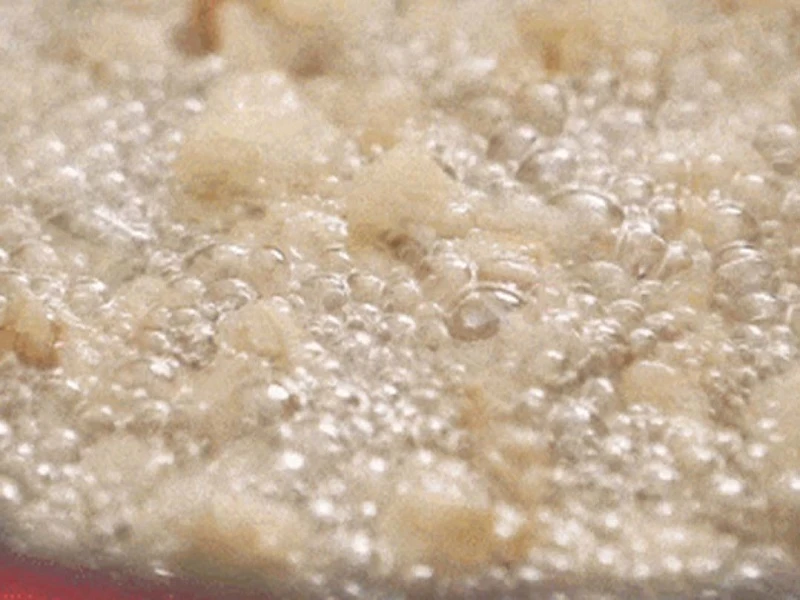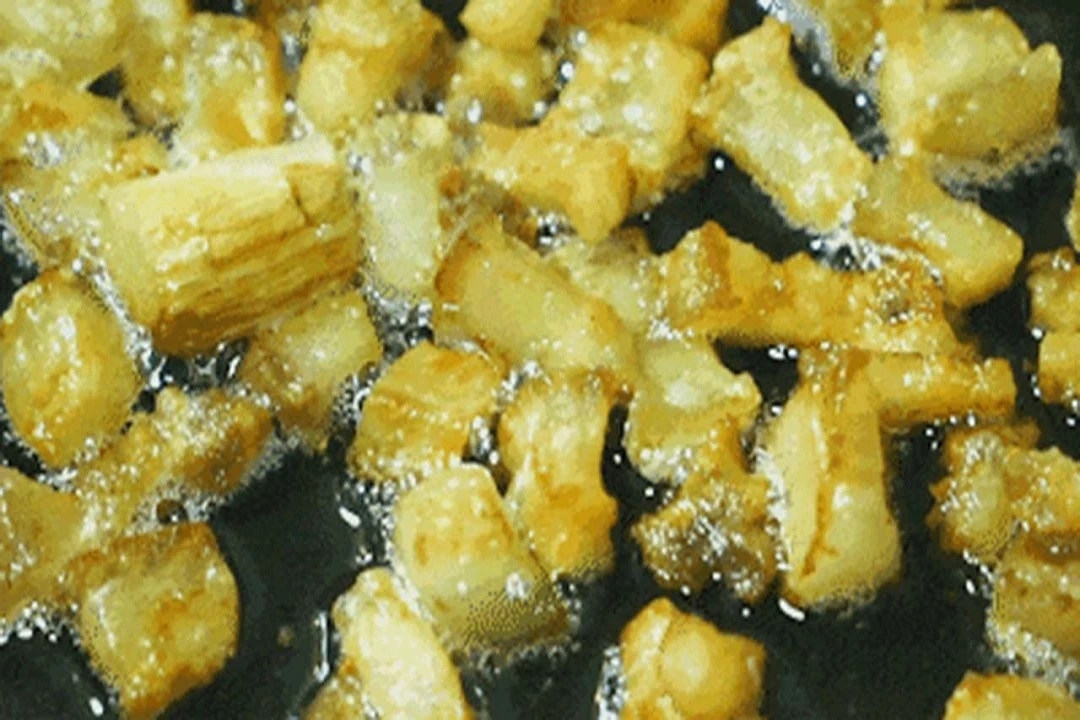In the realm of Chinese cuisine, few ingredients evoke as much nostalgia and debate as pork lard. Used liberally in dishes ranging from stir-fries to noodles, its addition can elevate flavors to a sublime level. In times of scarcity, a pot of rendered pork fat was considered a culinary treasure, enhancing meals with its rich aroma and texture.
However, as dietary habits evolve and health consciousness rises, pork lard has faced scrutiny. Modern households increasingly opt for vegetable oils over animal fats, fearing that prolonged consumption of pork lard may contribute to cardiovascular diseases.
The Allure of Pork Lard: Flavor and Nutrition
Pork lard, the most common animal fat in Chinese kitchens, owes much of its appeal to its distinctive flavor profile. According to senior food inspector Wang Sulu, the unique aroma of pork lard stems from trace proteins and breakdown products of glycerides. Moreover, pork lard contains over 40% saturated fatty acids, which meld with oils, starches, and fibers during cooking, imparting dishes with a crispy, moist, and smooth texture.
But does pork lard offer any nutritional benefits amidst its culinary charm?
Research by cardiovascular laboratory technician Fu Shufang highlights that pork lard is rich in essential nutrients such as fatty acids, vitamins, and minerals:
- Fatty Acids: A spoonful of pork lard contains approximately 5 grams of saturated fat, 5.8 grams of monounsaturated fat, and 1.4 grams of polyunsaturated fat. Its composition places it between butter and olive oil in terms of unsaturated fat content.
- Vitamins: Each spoonful also boasts 1000 IU of vitamin D, second only to cod liver oil. Vitamin D is crucial for calcium absorption, and vital for skeletal health and growth.
Additionally, pork lard provides significant amounts of vitamins A, B, and other essential nutrients, making it a relatively nutrient-dense food choice.
Health Considerations: Is Pork Lard Friend or Foe to the Heart?
The debate over pork lard's impact on cardiovascular health is contentious. Historically, it was believed that in times of scarcity, regular consumption of pork lard correlated with lower incidences of cardiovascular diseases. However, this notion lacks scientific backing.
Primarily composed of fat, pork lard's high saturated fat content has earned it a reputation for potential harm to cardiovascular health. Excessive intake can disrupt lipid metabolism, leading to obesity and cardiovascular issues. Despite containing beneficial nutrients, such as unsaturated fats and vitamins, its saturated fat content remains a concern, with 39 grams per 100 grams of pork lard.
Comparatively, artificial butter and cream often used in desserts contain higher levels of trans fats, posing greater health risks.
Cardiovascular diseases result from multiple factors—high blood pressure, cholesterol levels, unhealthy diets, smoking, excessive alcohol consumption, and genetic predispositions—rather than solely from one food item.
Debunking Myths and Practical Tips for Consumption
Various claims circulate regarding pork lard's health benefits, from detoxifying to cancer prevention. However, as affirmed by food inspector Wang Sulu, pork lard lacks specific detoxifying properties against toxins like pufferfish neurotoxins. Its composition, although complex, doesn't counteract such toxins in animal experiments.
Furthermore, the belief that vegetable oils produce carcinogenic substances at high temperatures, while pork lard does not, is unfounded. Wang Sulu clarifies that pork lard's high saturated fat content (nearly three times that of olive oil) increases the risk of obesity, hyperlipidemia, and cardiovascular diseases with excessive consumption.
In conclusion, while pork lard holds culinary significance and provides essential nutrients, its role in a balanced diet is crucial. As emphasized by Fu Shufang, moderation is key—limit daily intake to under 50 grams, ensuring saturated fat remains below 10% of total daily caloric intake. For dishes rich in meat, opt for vegetable oils, and consider high-saturated fat vegetable or animal oils for vegetarian diets. Individuals with cardiovascular diseases should further reduce saturated fat intake to 7%.
Stay tuned for the continuation of the article to explore more insights and practical advice on incorporating pork lard sensibly into your diet.
Incorporating Pork Lard Wisely: Practical Tips and Cultural Insights
While concerns about saturated fats in pork lard are valid, its cultural and culinary importance cannot be overlooked. In Chinese cuisine, especially in traditional dishes and street food, pork lard plays a crucial role in texture and flavor enhancement. From flaky pastries to crispy stir-fries, its use reflects centuries-old culinary traditions deeply ingrained in Chinese culture.
Cultural Significance and Culinary Uses
1. Flavor Enhancement: Pork lard's ability to impart a rich, savory flavor to dishes like Yangzhou fried rice or Cantonese char siu is unparalleled. Its unique melting point and texture make it ideal for achieving crispiness in fried foods and tenderizing meats.
2. Versatility: Beyond savory dishes, pork lard finds application in desserts such as mooncakes and traditional pastries like lao po bing (wife cake). Its role extends to preserving techniques, enhancing the longevity and flavor of cured meats and pickled vegetables.
3. Cultural Heritage: In Chinese culinary traditions, the skill of rendering and using pork lard is passed down through generations. Its use in festivals and celebrations underscores its cultural significance and ties to communal feasting and family gatherings.
Balancing Tradition with Modern Health Awareness
As dietary preferences evolve towards healthier options, the challenge lies in preserving cultural heritage while promoting health-conscious choices. Here are practical tips for incorporating pork lard sensibly:
1. Moderation: Enjoy pork lard occasionally as part of a balanced diet. Use it sparingly for its flavor-enhancing properties in dishes where its unique qualities are essential.
2. Alternative Oils: For everyday cooking, opt for healthier vegetable oils such as olive, sunflower, or peanut oil. These oils offer a lower saturated fat content while providing essential unsaturated fats beneficial for heart health.
3. Recipe Modification: Adapt traditional recipes by reducing the amount of pork lard used or substituting with vegetable oils where possible. This approach maintains flavors while reducing saturated fat intake.
4. Educational Initiatives: Promote awareness about balanced nutrition and culinary traditions through educational programs and initiatives. Highlight the historical and cultural significance of ingredients like pork lard alongside health considerations.
Conclusion: Embracing Culinary Diversity and Health Consciousness
The debate surrounding pork lard's health impacts underscores the complexities of dietary choices in a culturally diverse world. While acknowledging its culinary charm and historical significance, health-conscious consumers are encouraged to approach consumption with moderation and awareness.
In Chinese cuisine, where tradition and innovation harmonize, pork lard continues to occupy a revered place in culinary practices. Its rich flavors and versatile applications reflect a deep-rooted cultural heritage that spans generations. As dietary guidelines evolve, integrating traditional ingredients like pork lard with modern health considerations allows for a balanced approach to food culture preservation and personal wellness.
Ultimately, whether viewed as a culinary indulgence or dietary concern, pork lard prompts us to appreciate the intersection of cultural traditions, culinary arts, and health awareness in shaping our dietary choices.



